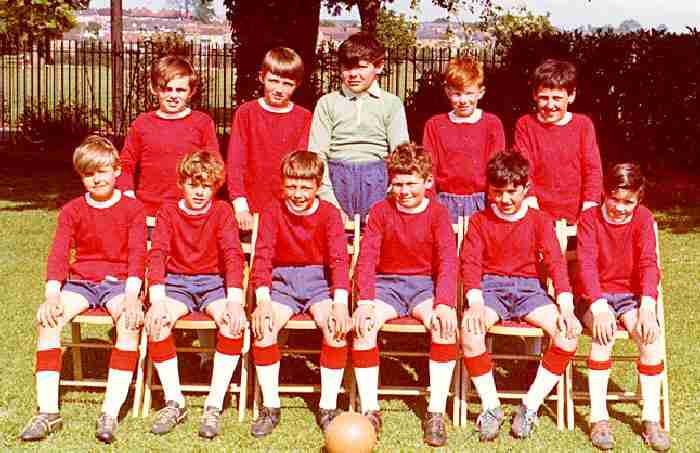
Figure 1.--This looks like an English youth soccer team in the mid-1960s. Notice the very plain uniforms. We are not sure if this is a school or some kind of club team. The boy in thev green jersey is presumablt the goalie. |

|
Football devreloped as a sport in England. Unlike Rugby football, the history of soccer is less well documented and not as involved with the public (exclusive private) schools. We note reports of matches between towns and villages. It as also played at schools, but not as commonly as Rugby. Class differences were involved here. Some saw soccer as a working-class sports. Some public schools banned soccer. One HBC reader tells us that at his public school (Norfolk Cathedrsl School) that even kicking a ball was banned. The sport, however, was so populr that private schools gradually added soccer to the sports program. State schools less coimmonly had sports programs. Early uniforms were very basic. The basic uniform standards were thus set in England where the sport developed. We are unsure about the first uniforms. We do note a jersey or "T"-shirt being worn with long shorts and kneesocks. After World War I the shorts gradually became shorter. We note youth soccer teams after World War II. We are not sure in many cases if these are school teams or some kind of youth sports clubs.
Football devreloped as a sport in England. Unlike Rugby football, the history of soccer is less well documented and not as involved with the public (exclusive private) schools. We note reports of matches between towns and villages. It as also played at schools, but not as commonly as Rugby.
Class differences were involved here. Some saw soccer as a working-class sports. Some public schools banned soccer. One HBC reader tells us that at his public school (Norfolk Cathedrsl School) that even kicking a ball was banned. The sport, however, was so populr that private schools gradually added soccer to the sports program. State schools less commonly had sports programs.
Early uniforms were very basic. The basic uniform standards were thus set in England where the sport developed. We are unsure about the first uniforms. We do note a jersey or "T"-shirt being worn with long shorts and kneesocks. After World War I the shorts gradually became shorter.
I'm not sure to what extent there were youth dsooccer teams in Britain before World war II. Many private schools discouraged soccer in favor of rugby, but this was not the case in all private schools. I simply do not know about state primary schools and grammar schools befoe the War. We note a variety of youth soccer teams after World War II. We are not sure in many cases if these are school teams or some kind of youth sports clubs. We know more private schools began fielding soccer teams. We also know that some state primary schools formed soccer teams. A British reader tells us that at his London primay school during the late 1960s, matches were organized with other schools gor the boys in their last year. At his school the boys wore shirts and socks in the school colors provided by th school. He does not recall much difference between fooitball and rugby shirts. There were also teams formed by sports clubs.
Navigate the Boys' Historical Clothing Web Site casual pages:
[Return to the Main country soccer uniform page]
[Return to the Main sport page]
[Camp shorts]
[Clam diggers]
[Cord shorts]
[Jeans]
[Jump suits]
[Koveralls]
[Lederhosen]
[Pinafore]
[Shortalls]
[Smocks]
Navigate the Boys' Historical Clothing Web Site:
[Return to theMain short pants page]
[Introduction]
[Activities]
[Biographies]
[Chronology]
[Clothing styles]
[Countries]
[Essays]
[Bibliographies]
[Contributions]
[FAQs]
[Glossaries]
[Satellite sites]
[Tools]
[Boys' Clothing Home]
